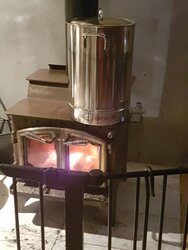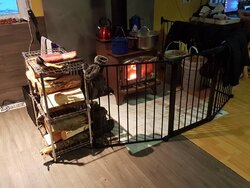I have an old LOPI wood stove. It is just cool enough to need the stove going. I also need it running for my slow cooking stew and the 8gallons of hot water for use.
I am fairly new to using a wood stove as an adult.
Any tips on how I can keep the fire going with putting the least about of heat into the house? Or is it just a burn as usual day with the windows open?


I am fairly new to using a wood stove as an adult.
Any tips on how I can keep the fire going with putting the least about of heat into the house? Or is it just a burn as usual day with the windows open?


Last edited by a moderator:

